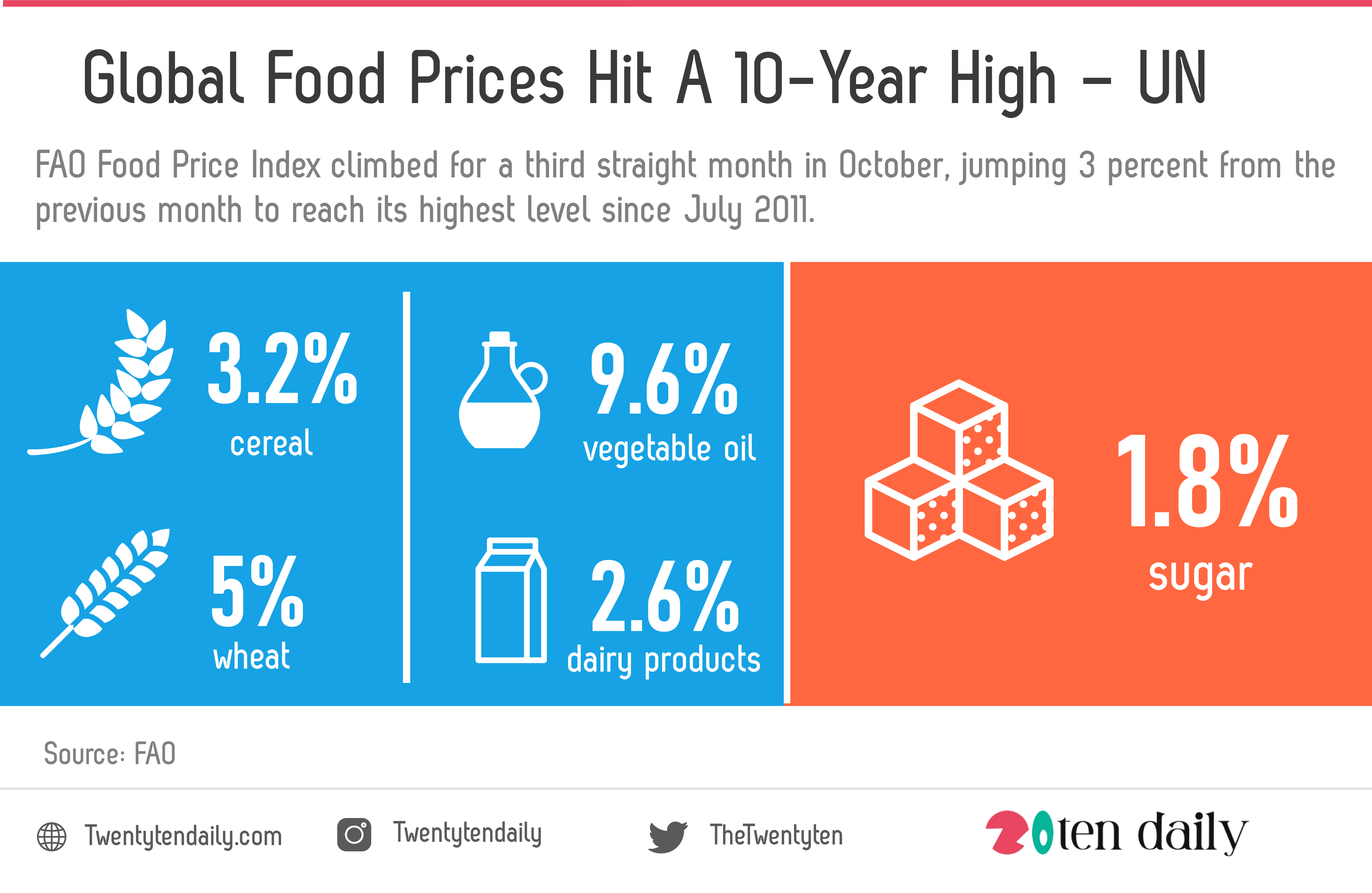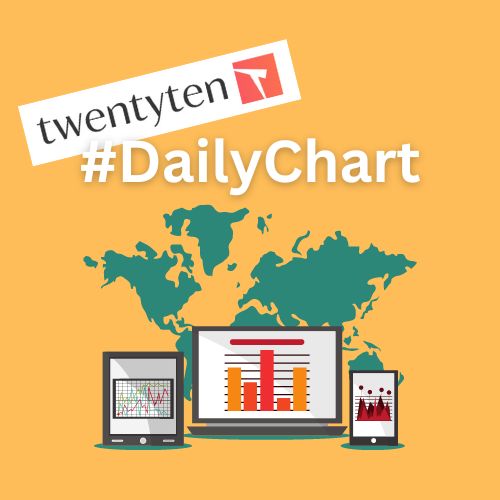Global Food Prices Hit A 10-Year High – UN
United Nations Food and Agriculture Organization has reported the continuous climb in food prices around the world, hitting a fresh decade high last month.
The FAO Food Price Index climbed for a third straight month in October, jumping 3 percent from the previous month to reach its highest level since July 2011.

Cereal prices overall increased by 3.2 per cent, with wheat rising five percent, due to reduced harvests in major exporting nations, including Canada, Russia and the United States. Prices of all other major cereals also increased.
The vegetable oil index went up 9.6 per cent, hitting an all-time high, and dairy rose by 2.6 points, with The UN barometer of world food prices has surged to a newly increased demand for butter, skimmed milk powder and whole milk powder, as buyers try to replenish low stocks. By contrast, cheese prices remained stable.
For the third consecutive month, the meat index declined, amid reduced purchases of pork products from China, and a sharp decline in beef from Brazil. Poultry and sheep prices rose.
After six consecutive monthly increases, sugar prices also dropped, by 1.8 per cent, amidst limited global demand and large surpluses for export.
Compared to last year, global cereal production for 2021, is anticipated to increase and reach a new record level, of some 2,793 million tonnes.
World cereal consumption for 2021/22 is heading towards a 1.7 per cent gain, led by an anticipated increase in global food consumption of wheat, rising in tandem with a growing global population.
Global prices for food, energy and other commodities have soared this year as countries roll back COVID-19 restrictions, triggering supply shortages especially for people living in poorer households that need to shell out a larger share of their income to keep themselves and their families fed.
The global supply crunch helped drive dairy prices higher for the second month straight, thanks to “buyers’ efforts to secure supplies to build stocks”, said the FAO.
Bucking the march higher were meat prices, which eased for the third consecutive month, led by falling pork prices, thanks to reduced purchases from China, and falling beef prices triggered by mad cow disease concerns surrounding Brazilian supplies.
The production, distribution and consumption of all this food, use about a third of the world’s total energy, according to a new report launched on Thursday on the sidelines of the UN’s Climate Change Conference (COP26) in Glasgow.
Feeding the world population is also responsible for about a third of global greenhouse gas emissions, making it a priority in the fight against climate change.
The report, Renewable energy for agri-food systems —Towards the Sustainable Development Goals and the Paris Agreement, shares several examples of how that can be accomplished.
Solar irrigation, for example, can improve access to water, enabling multiple cropping cycles and increasing resilience to changing rainfall patterns.



